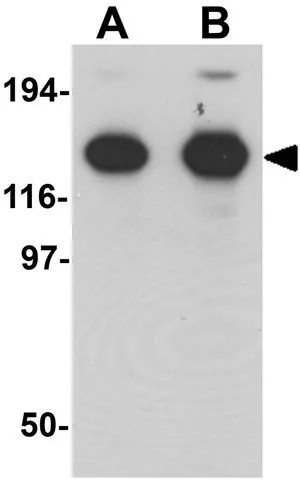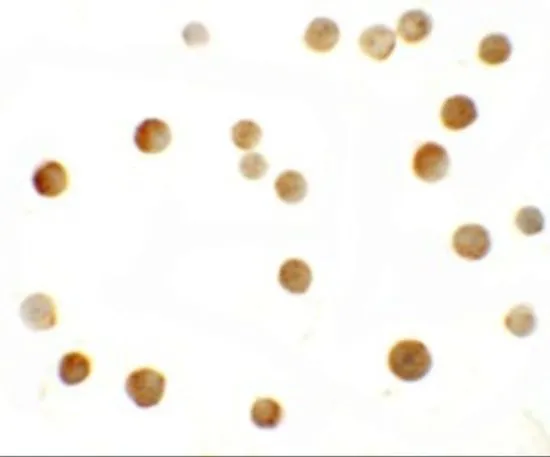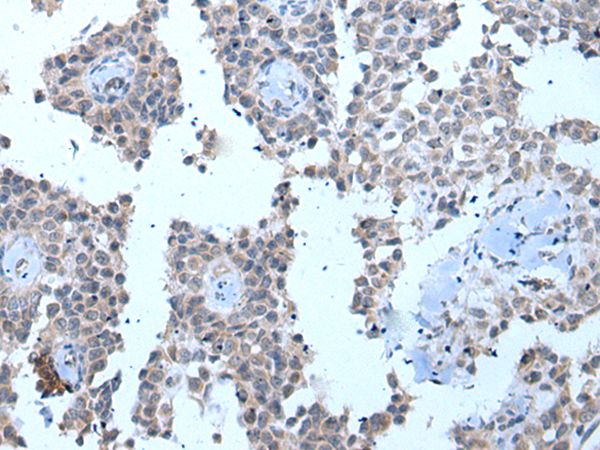
WB analysis of EL4 cell lysate using GTX31821 ZNF198 antibody. Working concentration : (A) 0.125 and (B) 0.25 microg/ml
ZNF198 antibody
GTX31821
ApplicationsImmunoFluorescence, Western Blot, ELISA, ImmunoCytoChemistry
Product group Antibodies
TargetZMYM2
Overview
- SupplierGeneTex
- Product NameZNF198 antibody
- Delivery Days Customer9
- Application Supplier NoteWB: 0.125 - 0.25 microg/mL. ICC/IF: 10 microg/mL. *Optimal dilutions/concentrations should be determined by the researcher.Not tested in other applications.
- ApplicationsImmunoFluorescence, Western Blot, ELISA, ImmunoCytoChemistry
- CertificationResearch Use Only
- ClonalityPolyclonal
- Concentration1 mg/ml
- ConjugateUnconjugated
- Gene ID7750
- Target nameZMYM2
- Target descriptionzinc finger MYM-type containing 2
- Target synonymsFIM, MYM, NECRC, RAMP, SCLL, ZNF198, zinc finger MYM-type protein 2, fused in myeloproliferative disorders protein, rearranged in an atypical myeloproliferative disorder, zinc finger protein 198, zinc finger, MYM-type 2
- HostRabbit
- IsotypeIgG
- Protein IDQ9UBW7
- Protein NameZinc finger MYM-type protein 2
- Scientific DescriptionThe protein encoded by this gene is a zinc finger protein that may act as a transcription factor. The encoded protein may be part of a BHC histone deacetylase complex. Translocation of this gene with the fibroblast growth factor receptor-1 gene (FGFR1) results in a fusion gene, which may be a cause of stem cell leukemia lymphoma syndrome (SCLL). Several transcript variants encoding the same protein have been found for this gene. [provided by RefSeq, Jul 2010]
- Storage Instruction-20°C or -80°C,2°C to 8°C
- UNSPSC12352203
References
- Zeng X, Zheng W, Sheng Y, et al. UBE2B promotes ovarian cancer growth via promoting RAD18 mediated ZMYM2 monoubiquitination and stabilization. Bioengineered. 2022,13(4):8000-8012. doi: 10.1080/21655979.2022.2048991Read this paper
- Yamanaka S, Horiuchi Y, Matsuoka S, et al. A proximity biotinylation-based approach to identify protein-E3 ligase interactions induced by PROTACs and molecular glues. Nat Commun. 2022,13(1):183. doi: 10.1038/s41467-021-27818-zRead this paper






